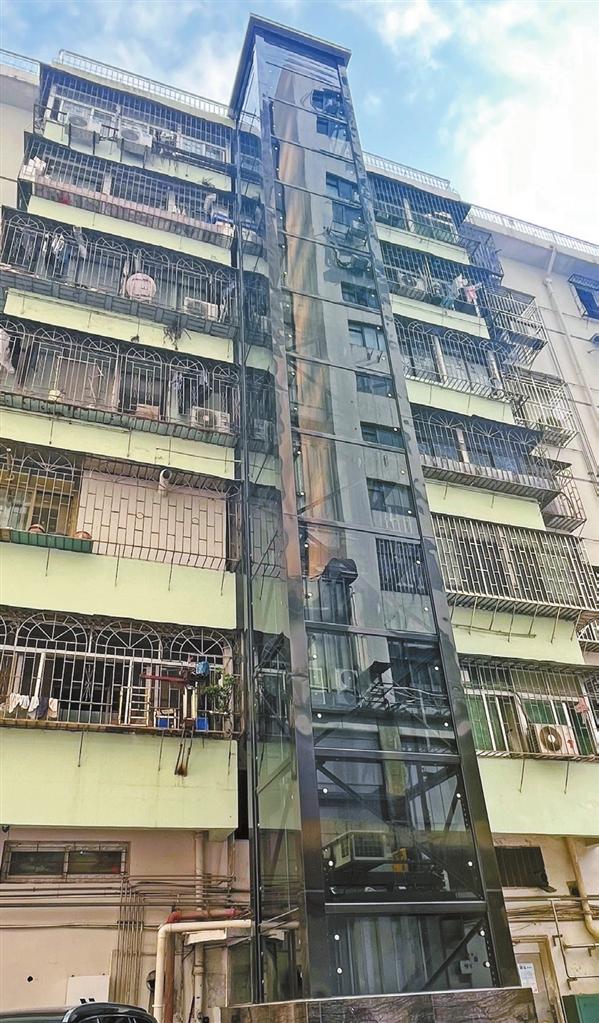
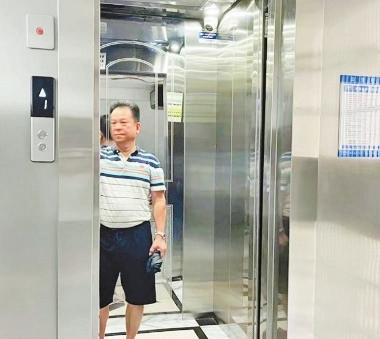
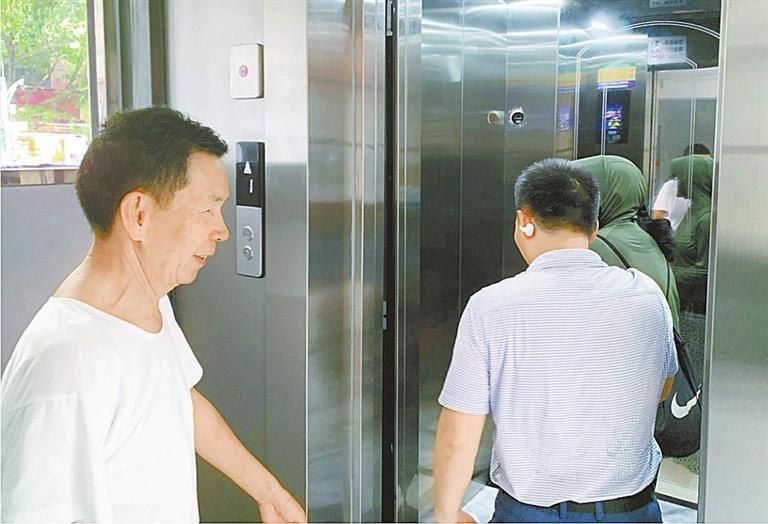
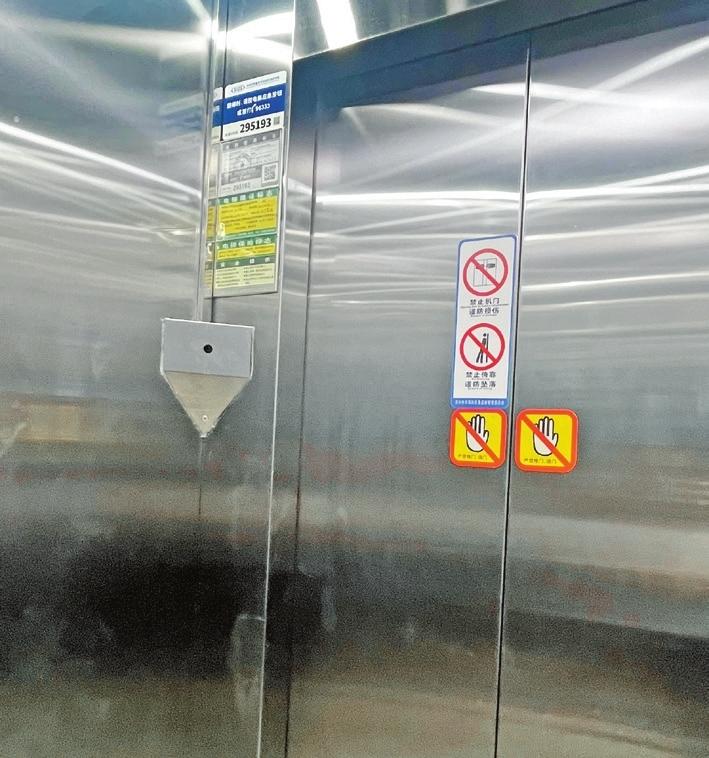
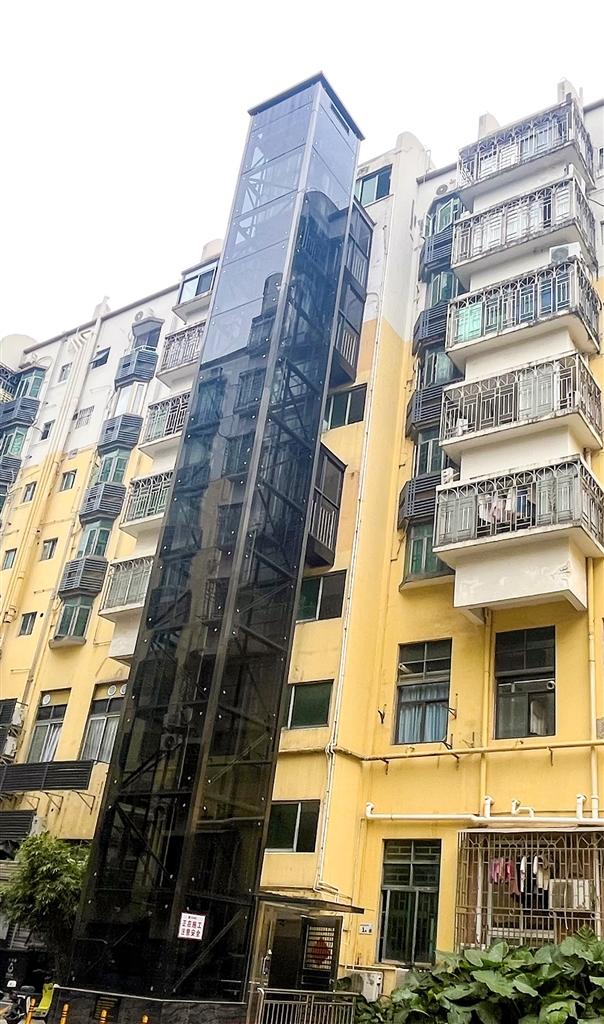
Wei Jie claudiamente@hotmail.com A SHARED economy is a familiar concept in today’s world. Many individuals have come to rely on shared bicycles for their daily commutes or use shared power banks to charge their mobile phones while on-the-go. However, shared elevators may be unfamiliar to many. In July, the installation of two shared elevators in an unassuming, seven-story residential building located on Wendong Road in Luohu District has thrust the Dongle Building and its unique model of funding modernization upgrades into the public spotlight. Many of the city’s older apartment buildings, like the Dongle Building, lack elevators, which did not become a common amenity in Shenzhen’s residential buildings until the late 1990s. The ‘Dongle Building model’ Homeowners in the old building, which was built in 1983, reached an agreement with Shenzhou Tongli Elevators (Shenzhen) Co. that used innovative arrangements to finance the installation of the elevators. With a total cost of over 600,000 yuan (US$86,957) per elevator, the project would not have been feasible if the homeowners had to pool money to pay for the elevators upfront. Instead, under the agreement, each household had to contribute only a few thousand yuan to cover installation expenses such as labor and materials, which was manageable. After a subsidy of 350,000 yuan, which was provided by the city government, Shenzhou Tongli Elevators covered the remaining upfront costs. As a result of this innovative financing arrangement, the homeowners collective and Shenzhou Tongli each hold 50% of the elevators’ property rights. Over the next 15 years, residents will reimburse the elevator company by paying a fee ranging from 0.2 yuan to 0.8 yuan per elevator ride. After that payment period is completed, Shenzhou Tongli will transfer its 50% ownership stake back to the homeowners. The “Dongle Building model” has created a new paradigm for other aging buildings from the 1980s and early 1990s that lack elevators — residents of these building now have the possibility of making similar arrangements for modernization. In recent years, there has been a growing trend to retrofit these buildings with elevators with the support of city government funds. However, even with government subsidies that cover roughly half of the expenses, it is still a significant challenge for the 10 to 12 households that typically reside on the upper floors of these older buildings to pool the remaining 300,000 yuan required within a short period of time. “This [shared elevator model] is the best and most practical solution to the financial challenge,” said Peng Wei, general manager of Shenzhou Tongli. “However, it is only feasible with a government subsidy covering half of the elevator costs.” With the government subsidy in place, Peng’s company only has to fund roughly half of the cost of an elevator, significantly alleviating the financial burden on the contractor. “Without this support, it would be difficult for my company to sustain its operations,” Peng added. A long road to elevator access The journey towards improved elevator access was no easy feat for the residents of the Dongle Building. It took Lu Chuhan, a long-time resident who spearheaded the initiative, more than two years to find a feasible solution. According to Lu, about 170 people currently reside in the building, 30 of whom are pregnant women, mothers with infants, and seniors, with the oldest being 90 years old. Lu, who lives on the seventh floor, found it increasingly challenging to climb up and down the stairs, especially when carrying his little granddaughter or grocery bags. Lu was motivated to install an elevator in his building when he observed elevators being installed in neighboring buildings seven years ago. Encountering financial hurdles with traditional financing approaches, Lu explored a shared elevator model that had been successfully used in other regions in China. After researching the project’s feasibility and conducting extensive negotiations with neighbors and elevator companies, Lu connected with Shenzhou Tongli. The company served as the elevator contractor for Lanli Garden, an aging housing estate with four buildings in Nanshan District. Embracing this modernization initiative, Lu and his neighbors overcame ownership concerns and unanimously agreed to proceed with the installation. The agreement stipulated that if the building was demolished for reconstruction, Shenzhou Tongli would unconditionally transfer the 50% ownership stake to the homeowners, provided the homeowners repay their remaining balance in a lump sum. “For instance, upon building dismantlement, if we have received 150,000 yuan, homeowners need only settle the remaining 150,000 in one go,” Peng explained. If Peng’s company were to go bankrupt within the next 15 years, ownership would be unconditionally transferred to the homeowners. Following Lu’s recommendation, shared elevators were also installed in several other residential buildings where Lu’s relatives live. “Previous attempts to modernize their buildings with elevators failed. Yet, it gained swiftly momentum after the shared elevator model was introduced,” noted Lu. According to Peng, besides Lanli Garden and the Dongle Building, his company has secured contracts to install approximately 300 shared elevators in Shenzhen — 30 have already been installed. However, not all elevator companies accept the shared elevator model due to the significant challenges it poses in terms of cost control and liquidity. As Peng explained, “Each elevator requires an initial investment of at least 300,000 yuan that takes 15 years to recoup. Improper management could lead to capital issues that many companies are unwilling to risk.” Peng said that Shenzhou Tongli’s readiness to adopt this business model lies in the company’s manufacturing capabilities and skilled workforce, which streamline costs. Previously an engineering enterprise, Shenzhou Tongli entered the elevator business in 2020 and built an elevator factory in Anhui Province that began operations in 2021. Promising business prospects Peng made a decision to embrace shared elevators following the Shenzhen government’s announcement of a subsidy program for retrofitting aging residential buildings with elevators in May 2022. The subsidies range from 260,000 to 350,000 yuan per elevator based on the number of floors a building has. Highlighting the significance of government support for this modernization endeavor, Peng emphasized the necessity of subsidies to prevent a potential twofold increase in fees for residents. Many of Shenzhen’s low-rise residential buildings from the 1980s and early 1990s lack elevators. Within Luohu District alone, 687 such residential estates exist. However, official data indicate that only 855 elevators were installed in older buildings in the city in 2023. Based on research conducted by Shenzhou Tongli, there are an estimated 30,000 residential buildings in Shenzhen without elevators. “There is vast market potential,” Peng said. Fee convenience Shenzhou Tongli elevators are equipped with a facial recognition system that conveniently charges residents upon entering the elevator. For visitors and delivery personnel, building cameras synchronize with the elevator monitoring system to accurately track their destination and assign usage fees. This innovative approach leverages advanced technology to address the inherent weaknesses of traditional billing systems, like the prevalent card-swiping payment method. “If I go to the fourth floor, but someone in the same elevator goes to the fifth floor, I can wait for him to swipe his card to go to the fifth floor and then take the stairs down to the fourth,” Peng said of a loophole inherent to the card-swiping payment method. As a result of the loopholes in older fee collection methods, many elevator service providers had to implement fee hikes to offset revenue shortfalls, leading to a vicious cycle. “Fortunately, with our meticulous billing system, we collect an average of about 2,600 yuan per month in fees from the Lanli Garden project and over 2,000 yuan per elevator from the Dongle Building, which has surpassed our initial revenue forecasts,” Peng shared. | 
